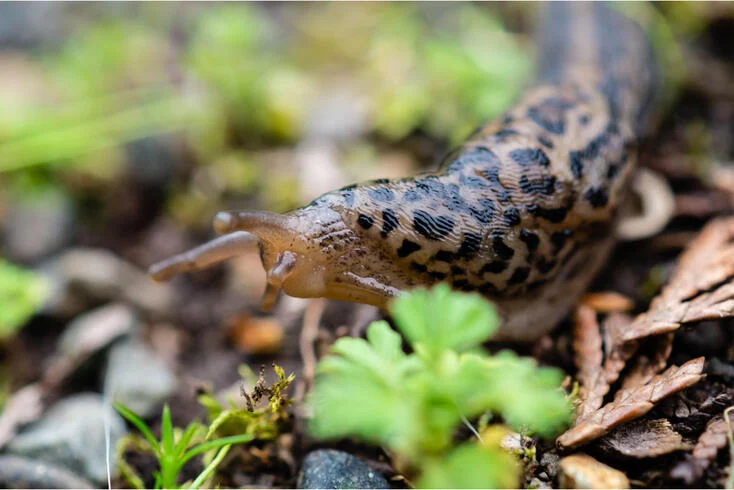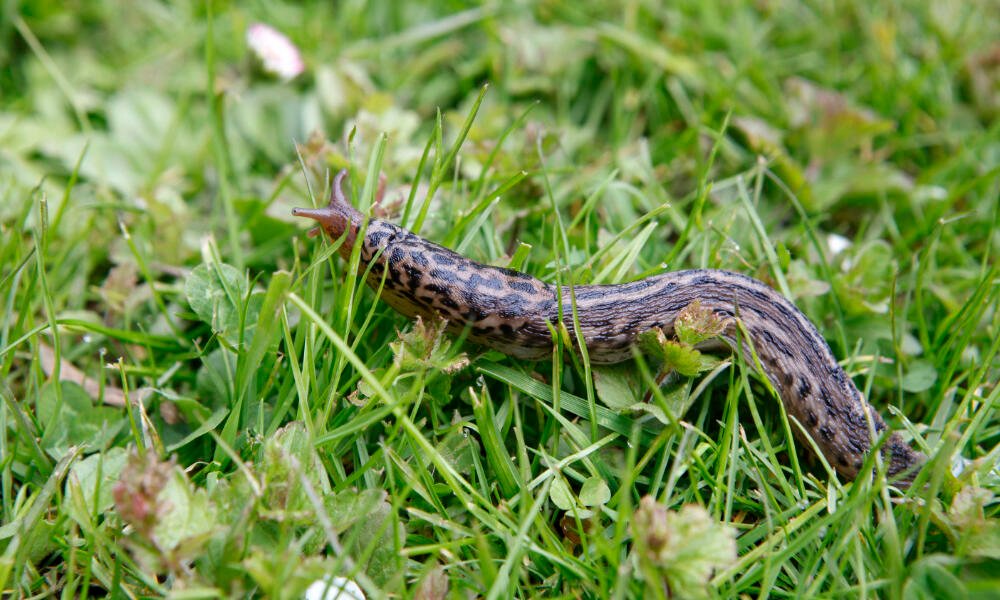Actually, no one wants to have slugs in the garden. But this does not apply to the tiger snail, because this is supposed to be an important helper in the fight against other slugs. But is that true at all?
Contents
The most important in a nutshell
- Tiger snails eat the eggs of slugs.
- However, fungi and dead plant parts are first on the menu of mollusks.
- The animals are nocturnal and love damp, cool habitats.
They are considered the insider tip against snail plagues in the garden: tiger snails. Their menu includes eggs and young of other snail species. But do tiger snails really help to regulate the snail population and how do the mollusks actually live?
Where does the tiger snail come from?
The tiger snail is actually called tiger snail (Limax maximus), but is also known under the names large snail, large fluke snail or tiger slug. Originally, the night snail comes from Southern and Western Europe, but is now spreading throughout Central Europe. In Europe, it likes to settle in floodplains, parks and gardens. However, damp cellars also attract the snail species.
How to recognize a tiger snail?
From the name, amateur gardeners would assume the tiger snail is striped patterned, but this is not the case. Instead, the great snail is patterned with dark spots. These can be elongated, which explains the tiger analogy that shows up on the mantle shield. The mantle shield itself is brown or gray and is distinguished from other nudibranch species because of its striking pattern.
The mollusks reach a maximum length of up to 20 centimeters, but are slightly shorter on average at 13 centimeters. The body is cone-shaped and rounds off at the posterior margin. In the mantle shield there is still a calcareous shell with a length of 13 to 15 millimeters. It is a remnant of a shell. At the posterior end of the shield there is the breathing hole of the tiger snail on the side.
At a quick glance, the snail can be quickly confused with other nudibranchs – despite its conspicuous stripes.
Are tiger snails poisonous?
Tiger snails are completely harmless to humans and pets.
Are tiger snails really useful in the garden?
Tiger snails are considered the magic bullet against a plague of snails in the garden, because their menu includes the eggs and young of other species. This is so true, but the problem is that the mollusks do not keep up with the reproduction rate of their prey. They reproduce only once a year and the young take 1.5 years to become sexually mature. Nevertheless, they can eat specimens of other snail species that are about the same size as themselves.
In addition, tiger snails are primarily herbivores. As a rule, they eat carrion, dead plant parts, fungi, and wilted leaves and shoots. They clean up the garden, so to speak, which is why they should be considered a beneficial insect, and at least help keep pests in check. Plants, on the other hand, are extremely rarely eaten by tiger snails.
How do tiger snails live?
The tiger snails are rarely seen, as they are nocturnal. Only when it rains, they may venture out of their hiding places during the day. These are usually under stone piles, where it is damp and cool – but they also settle in compost, under wood piles, in piles of branches and leaves or under roof tiles and dry stone walls. The predators of the tiger snail include shrews and hedgehogs.

Tiger snails are hermaphrodites – they therefore possess female as well as male sexual characteristics. For reproduction they look for a partner and retreat to an elevated position. There they place their head at the rear end of the partner and intertwine in a spiral. The reproduction can last several hours. During this process, they secrete a thread of mucus at the rear end, by which they abseil. After mating, one slug drops while the other crawls back up the mucus thread.
After mating, egg laying takes place. The first laying takes place in August and September. The second oviposition follows the next year in June and July. One snail lays between 100 and 200 eggs. The eggs are about 3.5 millimeters in size, colorless and transparent, and are highly vulnerable to predators. Beetles, nematodes and mites use the eggs as food. The surviving young hatch after three to six weeks. After 1.5 years, they are sexually mature and have a life expectancy of two to three years.
How to establish tiger snails in the garden?
You do not need to specially establish the beneficial insect in the garden, as it spreads itself and usually remains undetected. However, if you want, you can provide an incentive for tiger snails in your garden. Provide a suitable habitat for the slug that is moist and shady. Shrubs, woody plants, hollow bricks, old wooden boards, and piles of leaves and compost provide good habitat. Alternatively, there are special snail farms where you can buy adult tiger snails.
Alternatives to tiger snails
Because of their limited usefulness against garden pests, alternatives to tiger snails are a good way to control a slug infestation. Roman snails are helpful beneficial insects in which slug eggs serve as food. Otherwise, the Roman snail also feeds on wilted and decaying plant parts.
You can also make your garden attractive to slug predators. In a natural garden, this almost happens by itself – hedgehogs, shrews, ground beetles and frogs quickly settle here. Also attract songbirds that like to feed on the mollusks.
It is better not to use slug pellets. If you still want to use it, then make sure that the slug pellets are environmentally friendly. The active ingredient ferric phosphate is crucial for this. Apply the mineral spring, because slugs need to eat a lot of the slug pellet for it to be effective.


